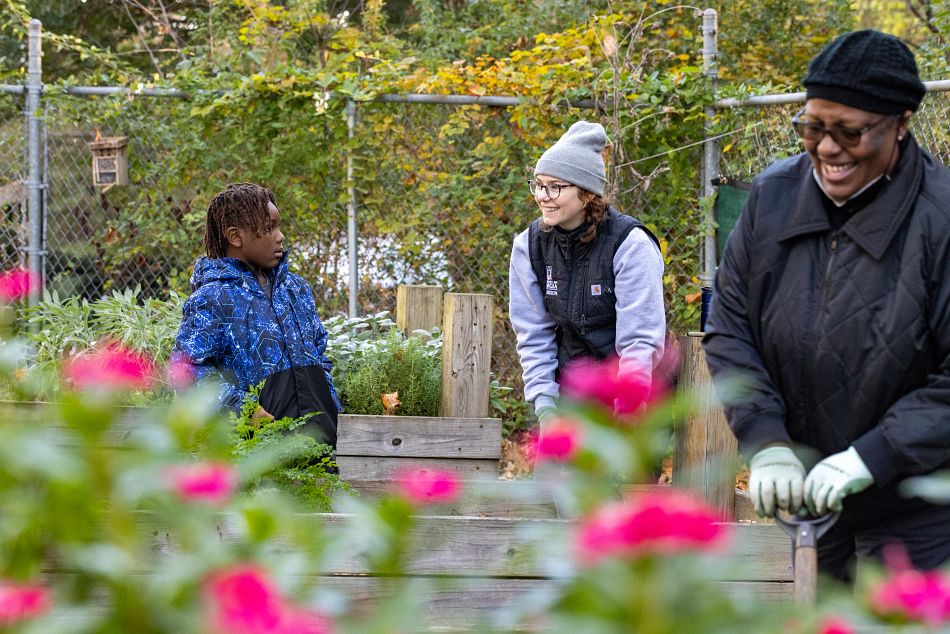|
Nobody knows how much water Georgia farmers pumped into their fields over the dry summer of '99 -- or, for that matter, over any summer.
"We can make some educated guesses," said State Geologist Bill McLemore of the Georgia Geologic Survey, a branch of the Environmental Protection Division of the state Department of Natural Resources. "But there's no question that's the weak spot in our water use information system."
With demands on water resources mounting, it's a weakness the state can't afford to carry into the next millennium. So the DNR is funding a University of Georgia project called Ag Water PUMPING (Potential Use and Management Program in Georgia).
Agricultural Water Use High
Industries and cities meter their water use, McLemore said. That allows for fairly accurate accounting. Farmers, though, don't keep track of the water they use.
|
| UGA technician Jason Mallard checks the flow rate on a southeast Georgia center pivot rig, one of the 400-plus irrigation systems to be monitored over the next five years. |
The DNR figures its nearly 20,000 agricultural water use permits closely reflect the number of irrigation systems out there.
"Agriculture is the second-largest user of water statewide," McLemore said. "It's the single largest user of groundwater."
Farmers water during the growing season. For their biggest crops, that's about six months. "For that period, they may be the biggest water user overall," he said. "Some big farms use as much water as medium-size cities."
Ag Water PUMPING
The need to measure ag water use was clear by the mid-'90s, McLemore said. So the state asked the UGA College of Agricultural and Environmental Sciences to devise a project to monitor a statistical sample of the irrigation systems.
"The U.S. Geological Survey had tried to get farmers to volunteer in a project like this," he said. But the USGS approach didn't get the needed data. "USGS has good planners in Atlanta. But doesn't have a local presence close to the farmers."
The CAES, through its Extension Service, does. Agents in every county work daily with farmers and have close links with CAES engineers and other scientists.
Monitoring 400-plus Irrigation Systems
"We put together a proposal to measure 400-plus systems across the state over five years and develop (computer) models to accurately estimate total water use," said UGA engineer Dan Thomas.
Thomas, a CAES professor of biological and agricultural engineering, heads a UGA team that began setting up the monitoring system this summer.
|
| County Extension Service agents like David Curry (right) of Toombs County work with local farmers who volunteer to participate in the UGA study. Here, former ag engineer Tony Tyson installs an hour meter to enable technicians to monitor this irrigation system. |
Using the state permits, the team came up with a sample of irrigation systems to monitor. They work through county agents to contact each farmer on the list.
Farmers Take Part Voluntarily
To include an irrigation system in the study, UGA engineers and technicians first check its water flow rate. If the rig doesn't already have an hour meter, the team installs one. Then technicians will check the meter monthly to see how long it pumped.
The project still requires farmers to volunteer. But so far, that hasn't been a problem. "Most of our farmers understand the need for this study," said David Curry, an Extension agent in Toombs County.
Thomas said getting the monitoring part of the project in place will take two years. "About 170 systems are completed now," he said. "We have three groups, and at times four, doing the installation."
Southwest, Southeast Areas First
Water disputes in southwest Georgia and saltwater intrusion in groundwater along the coast make water-use data from those areas more critical. They were the first areas to be included, Thomas said.
The work will soon expand. In 2000, the team will not only put in the rest of the monitoring sites, but will start checking the ones already installed.
As the data begins to flow, the work on the computer models will grow. The models will provide accurate water-use data on many levels -- by county, drainage basin, etc.
"Statewide, we've got pretty reasonable water-use estimates now," he said. "This will give us more precise data in local areas."
That data, McLemore said, is essential. "Natural resource management is based on good science and good engineering," he said. "And those depend on accurate numbers."
For more information on the project, contact Thomas or research coordinator Cathy Myers-Roche at (912) 386-3377 or agricultural engineer Kerry Harrison at (912) 386-3442.

 This
story is another in a weekly series called "Planting the
Seed: Science for the New
Millennium." These stories feature ideas and advances in
agricultural and
environmental sciences with implications for the
future.
This
story is another in a weekly series called "Planting the
Seed: Science for the New
Millennium." These stories feature ideas and advances in
agricultural and
environmental sciences with implications for the
future.






